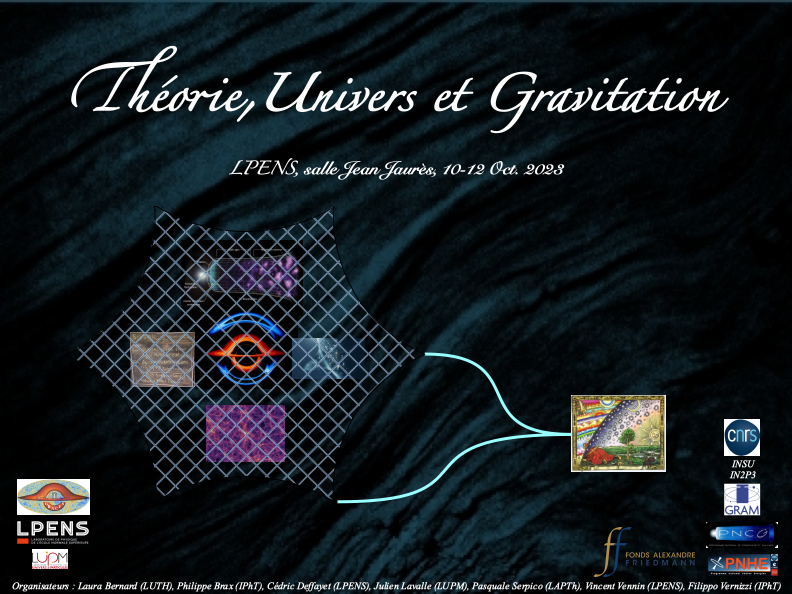Orateur
Description
As underlined by recent events, numerous efforts are directed towards exploring gravitational waves (GWs) in the low frequency regime, below the LIGO-Virgo-KAGRA ranges. The high frequency regime, however, remains vastly unexplored. There is a good reason for that: no substantial signal is expected from known astrophysical or cosmological sources above few kHz. (Ultra) high frequency GWs are however expected from many beyond standard model sources: primordial black holes, topological defects such as cosmic strings, superradiance phenomena, collisions of “bubbles” arising from phase transitions in the early universe, …
In this presentation I propose to present two recent works related with high-frequency gravitational waves:
i) Recently, the possibility to use resonant cavities located e.g., in haloscope experiments, to search for GWs in the GHz range has gained a lot of interest, with strain sensitivities announced to be around 10^(-22). In a recent work performed in collaboration with A. Barrau, J.G. Bellido and T. Grenet, see https://arxiv.org/pdf/2303.06006.pdf, we have re-evaluated the estimated sensitivity, focusing on compact binary coalescences signals and taking the Grenoble Axion Haloscope (GrAHal) setup as a benchmark.
ii) In collaboration with the laser physics department of Oxford we have investigated the gravitational waves generated by high-energy lasers carrying orbital angular momentum. Focusing on Bessel beams we provided novel analytical expressions and numerical computations for the generated metric perturbations and associated power. Findings show that properties of the generated GWs, such as frequency, polarisation states or direction of emission, can be controlled by the pulse parameters and other optical arrangements. The associated paper is to appear by mid of July.

